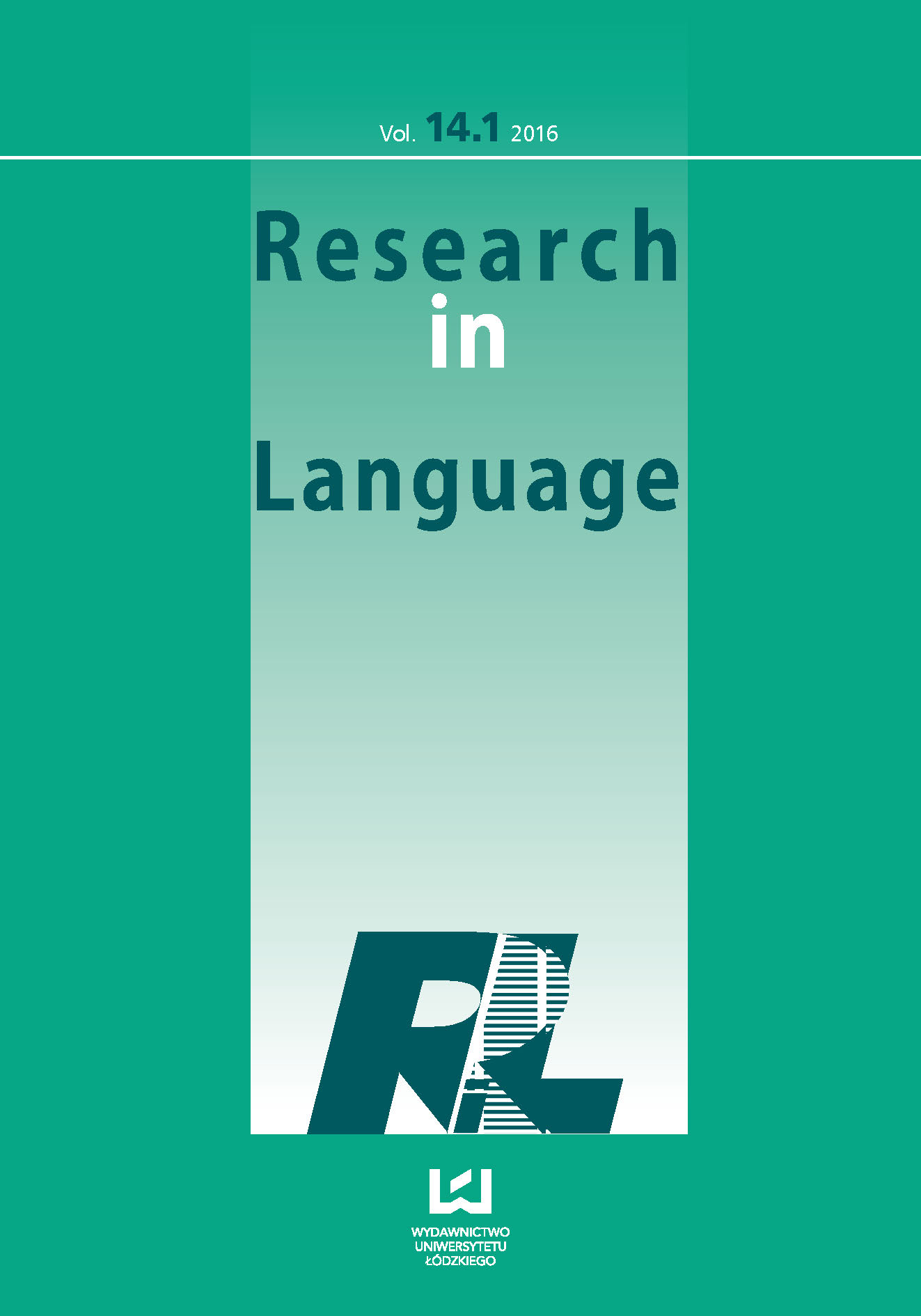The meaning of „nasal grunts” in the NECTE corpus. A preliminary perceptual investigation
DOI:
https://doi.org/10.1515/rela-2016-0001Keywords:
”nasal grunts”, meaning, perception, features, GeordieAbstract
This paper reports a perceptual evaluation of the meanings conveyed by the acoustic components of “nasal grunts” (Chlebowski and Ballier 2015), i.e., non-lexical conversational sounds realised with a nasal feature (e.g. <ehm>, <uhhuh>, <mmhm>). This study follows the experimental investigation conducted by Chlebowski and Ballier (2015) on the acoustic components of such sounds in the PVC project (Milroy et al. 1997), which is part of the NECTE corpus (Allen et al. 2007). In accordance with current claims in the literature, they ascribed meanings to these acoustic features, e.g. fall-rises express that the “speaker implies something” (Wells 2006: 27), and verified their validity through an analysis of the context surrounding the “nasal grunts”. Nonetheless, to avoid problems of circularity and ad hoc categories, the present study includes a perceptual evaluation by four participants. To verify the meanings ascribed to the features of “nasal grunts”, three native speakers of American English were recorded in short casual conversations and three perception tests were created using these recordings, with Praat software (Boersma and Weenink 2009). The first two tests aim to check whether different acoustic features: 1) are perceived as different when presented in pairs; 2) can be identified by the participants (as falls or rises) in isolation. The last test aim to determine whether each feature bears the same meaning: 1) in isolation, 2) in a given context, or 3) in scripted conversations likely to trigger the meanings ascribed by Chlebowski and Ballier (2015). Results suggest that acoustic components of “nasal grunts” in Geordie English do convey specific attitudinal meanings, and raise the possibility of a perceptual hierarchy of those components.
References
Allen, W., Beal, J., Corrigan, K., Maguire, W., and H. Moisl. 2007. A linguistic “time-capsule”: the Newcastle Electronic Corpus of Tyneside English. Creating and Digitizing Language Corpora. New York/Basingstoke, Hampshire: Palgrave-Macmillan, 2. Available from: http://research.ncl.ac.uk/necte/index.htm [Accessed on: 28 April 2016]
Google Scholar
Blau, E. K. 1991. More on Comprehensible Input: The Effect of Pauses and Hesitation Markers on Listening Comprehension. US Department of Education, University of Puerto Rico, Report-Research.
Google Scholar
Boersma, P. and D. Weenink. 2009. Praat. [Online]. Available from: http://www.fon.hum.uva.nl/praat/ [Accessed on: 28 April 2016]
Google Scholar
Boersma, P. and D. Weenink. 2016. Multiple Forced Choice listening experiment 6. Responses are sounds. Praat documentation, University of Amsterdam. Available from: http://www.fon.hum.uva.nl/praat/manual/ExperimentMFC_6__Responses_are_sounds.html [Accessed on: 28 April 2016]
Google Scholar
Brazil, D., Coulthard, M., Johns, C., and C. Johns, C. 1980. Discourse intonation and language teaching. London: Longman.
Google Scholar
Cenoz, J. 1998. Pauses and Communication Strategies in Second Language Speech. US Department of Education, University of the Basque country, Report-Research.
Google Scholar
Chlébowski, A. 2015. “Nasal grunts” in the NECTE corpus, an experimental investigation. Unpublished MA thesis. Universite Paris VII, Denis Diderot, France.
Google Scholar
Chlébowski, A. and N. Ballier. 2015. “Nasal grunts” in the NECTE corpus – Meaningful interactional sounds. EPIP Proceedings: 54-58.
Google Scholar
Corley, M. and O. W. Stewart. 2008. Hesitation disfluencies in spontaneous speech: The meaning of um. Language and Linguistics Compass 2 (4), 589-602.
Google Scholar
Cruttenden, A. 1981. Falls and rises: meanings and universals. Journal of Linguistics 17, 77–91.
Google Scholar
Crystal, D. 1975. The English Tone of Voice. London: Edward Ad Arnold.
Google Scholar
Milroy, J., Milroy, L. and G. Docherty. 1997. Phonological variation and change in contemporary spoken British English. Economic and Social Research Council. Available from: http://research.ncl.ac.uk/necte/index.htm [Accessed on: 28 April 2016]
Google Scholar
Schroder, M., Heylen, D. K. J. and I. Poggi. 2006. Perception of non-verbal emotional listener feedback. In R. Hoffmann and H. Mixdorff (eds.), Speech Prosody, 1-4. TUDpress Verlag der Wissenschaften Dresden.
Google Scholar
Snow, D. and H. L. Balog. 2002. Do children produce the melody before the words? A review of developmental intonation research. Lingua 122 (12), 1025-1058.
Google Scholar
Swerts, M. and R. Geluykens. 1994. Prosody as a marker of information flow in spoken discourse. Language and speech 37(1), 21-43.
Google Scholar
Tateishi, M. 2013. Effects of the Use of Ultrasound in Production Training on the Perception of English/r/and/l/by Native Japanese Speakers. Doctoral dissertation. University of Calgary.
Google Scholar
Team, A. 2012. Audacity. Audio editor and recorder. Available from: http://www.audacityteam.org/ [Accessed on: 28 April 2016].
Google Scholar
Tench, P. 1996. The intonation systems of English. London: Cassel.
Google Scholar
Ward, N. G. 2000. Issues in the transcription of English conversational grunts. First (ACL) SIGdial Workshop on Discourse and Dialogue, 29-35.
Google Scholar
Ward, N. G. 2006. Non-lexical conversational sounds in American English. Pragmatics and Cognition 14 (1), 129-182. Available from: http://digitalcommons.utep.edu/cs_techrep/307 [Accessed on: 28 April 2016].
Google Scholar
Wells, J.C. 2006. English Intonation: An Introduction. Cambridge: Cambridge University Press.
Google Scholar
Downloads
Published
How to Cite
Issue
Section
License
Copyright (c) 2016 © Copyright by Authors, Łódź 2016; © Copyright for this edition by Uniwersytet Łódzki, Łódź 2016

This work is licensed under a Creative Commons Attribution-NonCommercial-NoDerivatives 4.0 International License.










